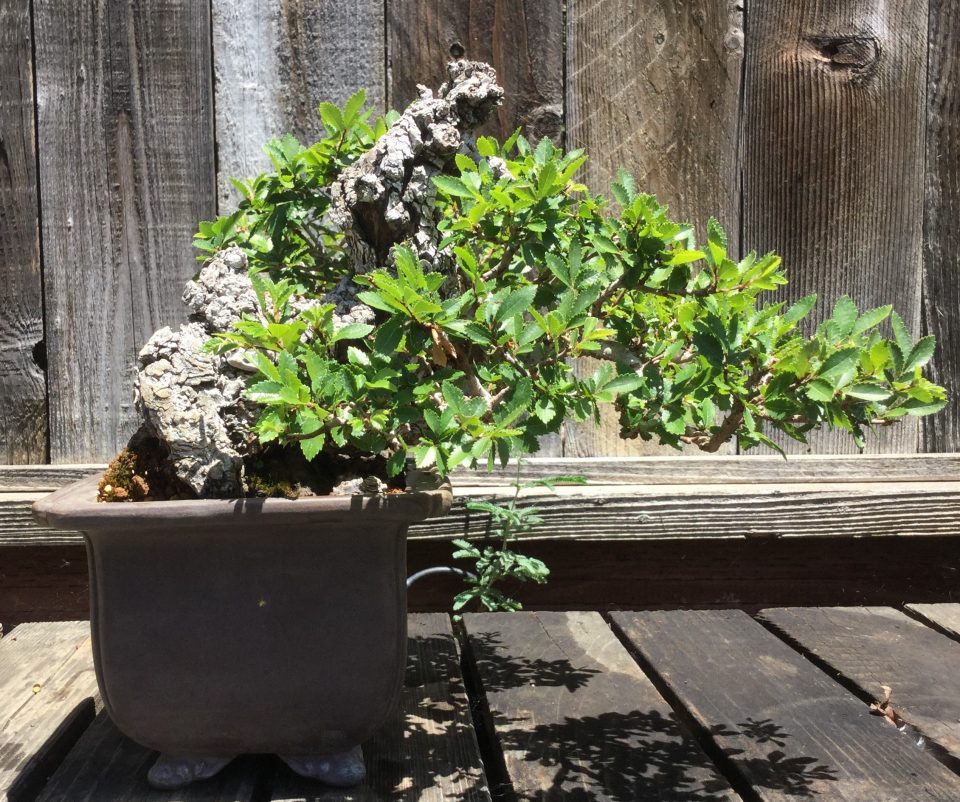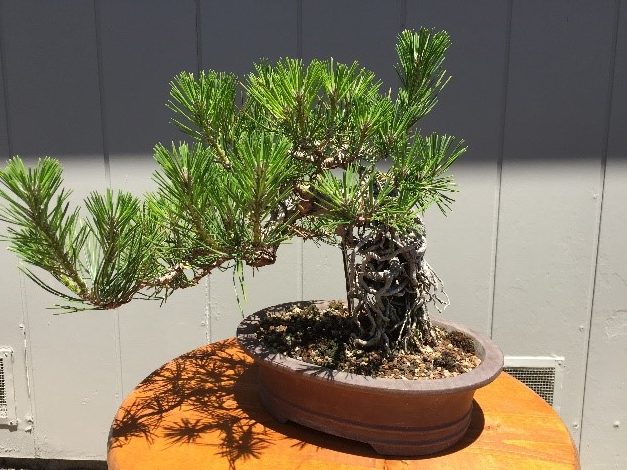Due to the current stay at home restrictions, there are no scheduled meeting/demonstration and workshops for May 2020.
Now that May is here, it’s time to get back to work on our deciduous and broad leaf evergreen Bonsai. Most of our deciduous and broad leaf evergreens’ foliage has now hardened off which is one of the signs we look for before we wire, style and cut our Bonsai.
Do you remember the other three things we look for?
- General overall growth of our bonsai (Bonsai getting bushy)
- Runners of the terminal ends of branches
- Foliage has hardened off
If you plan to wire/style and cut your Bonsai, be sure that they are showing the above three signs.
Getting Busy with Deciduous
From now till November is the busy season for deciduous and broad leaf evergreens. These trees are not necessarily labor intensive but time sensitive. Deciduous or broad leaf evergreen Bonsai can grow fast, you may be working on them several times during the growing season. Fast growing Bonsai also thicken fast, so if wire is applied to the branch, keep an eye out or the branch will grow over the wire. Generally, I never keep wire on a deciduous tree for more than a year and have removed wire as soon as within three weeks of application.
When is the right time you ask? If a branch needs thickening, then let it grow, if the branch is thick enough, then cut them back to create division.
Generally, deciduous and broad leave evergreens can be cut/thin/styled this month. An exception can be cork bark oak. They start to leaf out later in the spring and tend to be worked on more at the end of May or even June.
Fast vs. Slow Growing Bonsai
It’s important to understand that working with Bonsai that grows fast, requires a lot more of our time, whereas Bonsai that grows slow requires less of our time. The benefits of a fast growing tree is that you can develop the tree quickly into Bonsai whereas slower growing trees take much longer to develop into Bonsai. For example, a Chinese elm can be refined much faster than a beech. Knowing how much time you have to spend on your Bonsai may cause you to select specific species to work with.
Defoliation and Some Misconceptions:
First off, not every deciduous tree needs to be defoliated. There are also species out there that will not take kindly to defoliation at all (e.g. hornbeam, beech, certain varieties of Japanese maple), especially if the defoliation is complete. Defoliation isn’t only done on deciduous trees either. There are other broad leaf evergreens that can take defoliation (oaks, silverberry and ficus are a few examples).
So, what is Defoliation and what does it do for us?
- Weakens the defoliated area
- New Leaves will be smaller
- Easier to wire branches
- Maintain (NOT Create) Ramification (We’ll discuss this more at the workshop)
Those are the four main reasons why we choose to defoliate. If your current goals don’t match up with any of the four reasons, then don’t defoliate.
Example: We want a branch to grow out and get stronger. We don’t defoliate that branch because it will slow the growth down.
Misconceptions: Cutting back vs. Defoliation
The biggest misconception to defoliation is that it will give you back budding. Back budding is not caused by defoliation, but by the cutting back of branches. We can cut the tree back without defoliating and back budding will occur. Keep defoliation and cutting back into two separate categories to help ease the understanding of defoliation.
Wiring
If you plan on wiring your trees this month, be sure to bring the proper wire size ranges. Aluminum wire should be used for deciduous and broadleaf evergreens, whereas copper should be used for conifers. Ideally you should have a set of aluminum wire in the following sizes: 1mm, 1.5mm, 2.0mm, 2.5mm, 3mm, 3.5mm.
Watering
As always, be aware of how wet or dry your trees are and water accordingly. Recognize which trees like water (deciduous) and which trees don’t like water (high mountain pines). Training your eyes and understanding your tree’s water consumption rate will help you catch any problems that arises. You may notice that a tree that normally takes a lot of water isn’t taking as much anymore. Is there a problem developing or is it because the tree was recently cut back? If you see these things early, you can make adjustments that will help your tree continuing to growth healthy.
…more to be added in the future
The above information and more can be found on the web site established by Peter Tea at https://www.ptbonsai.com/. Peter is a professional bonsai artist and teacher.
Stay healthy and safe.


















































